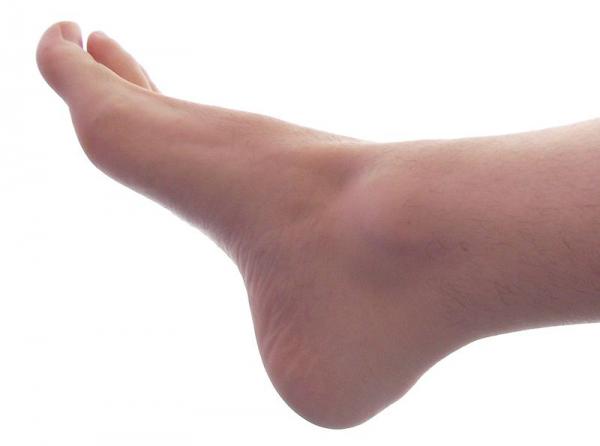Foot Tips for Hikers
Title
Body
 A 72-year-old woman went to her podiatrist recently, after noticing increasing pain and swelling in her foot. Although she had not twisted or injured her foot, she had noticed increasing discomfort over the previous few weeks. Hiking mostly along the Hudson River for six to seven miles, usually three times a week, she had trouble completing her most recent outing. This older hiker had two questions for her foot doctor: "What's wrong with my foot?" and "Can I continue hiking?"
A 72-year-old woman went to her podiatrist recently, after noticing increasing pain and swelling in her foot. Although she had not twisted or injured her foot, she had noticed increasing discomfort over the previous few weeks. Hiking mostly along the Hudson River for six to seven miles, usually three times a week, she had trouble completing her most recent outing. This older hiker had two questions for her foot doctor: "What's wrong with my foot?" and "Can I continue hiking?"
The answer to the first question was straightforward after an examination and X-rays. The patient had developed a moderate to severe capsulitis, or joint inflammation, in the ball of her foot. The answer to the second question was more difficult.
"Think of yourself as an athlete," her podiatrist told her. "If you do not rest your foot, you may be able to walk through another moderate hike; however, you may be out for the rest of the season." In the end, this hiker followed her podiatrist's advice for rest, anti-inflammatory medication and some special padding for the bottom of her foot. She sat out a few weeks of hiking, but then returned to her regular schedule.
The human foot is well-designed for walking and hiking. The many small joints in the foot are able to adapt to changing and uneven terrain. Other variables, however, such as taking a particularly long hike, or carrying a heavy backpack, can tip the balance in favor of possible foot or leg injury.
Foot pain is usually a sign that an injury has occurred. A repetitive activity or stress, such as hiking uphill for several hours carrying extra weight, can cause a foot injury. Unlike a leg cramp, which may eventually go away with continued walking, a foot injury will only get worse.
Common Injuries
Injuries due to overuse include capsulitis, or, inflammation of the soft tissues surrounding a joint. This occurs most frequently around the ball of the foot. Symptoms may include pain and swelling, sometimes affecting just one toe. In severe cases, a toe may begin to take on the appearance of a hammertoe.
Pain under the heel is also a common foot ailment in the very active patient. Symptoms also include pain while standing and walking, centered in the heel. In some cases, a heel spur may be present. This condition, however, is also an inflammation of the fascia, a ligament-like structure stretching from the heel bone to the ball of the foot.
Early intervention is critical for these conditions. Prompt treatment includes application of a cold pack to the painful area for 5-10 minutes a few times a day, anti-inflammatory medication, and, where appropriate, corrective arch support placed into shoes. More severe cases frequently benefit from a cortisone injection.
A common injury for hikers on uneven terrain is an ankle sprain. A moderate or severe sprain could involve a partial or complete tear of an ankle ligament. Frequently, the more severe injuries involve significant swelling and sometimes discoloration of the surrounding skin. A rapid application of a splint to help reduce the swelling and allow the tissues to heal is important. The splint also helps prevent re-injury. Application of an ice pack will help initially, as will elevating the injured foot. Hiking on a foot with an acute ankle sprain can significantly increase the time needed for healing.
Many soft tissue injuries will improve with resting the affected foot, applying ice to the area for 5-10 minutes a few times a day, a compression bandage, such as an Ace wrap, and elevating the foot. It is a good idea to take along on hikes a few Ace wraps and several cold packs which can be activated in the field, when needed.
Those Pesky Blisters
Ice and an Ace wrap will not, however, help a hiker's nemesis-blisters. These painful and annoying injuries can easily be prevented. Blisters occur in the presence of two conditions: repeated chafing of skin against a shoe or boot, and moisture or perspiration. Be certain that shoes or boots fit properly before going out on the trail, and use foot powder to help keep your feet dry. In addition, socks should always be changed if they are wet or even damp. A prescription foot anti-perspirant is available for more difficult cases.
To treat a blister, simply lance or open the blistered skin slightly to allow fluid to drain. Do not remove the blistered skin. Cover the area with dry gauze and tape or a large adhesive bandage.
Failure to keep feet clean and dry can also result in a skin fungus infection, commonly referred to as athlete's feet. This condition will create an itchy, burning sensation. Some over-the-counter preparations may help, but the condition often requires a prescription strength medication for complete healing. In addition to any medication, however, keeping the feet clean and dry is important to treating this condition and preventing it from recurring.
Howard E. Friedman, DPM, is a podiatrist and board certified foot surgeon treating hikers and non-hikers in Suffern, NY. A second article in this series will discuss some more common foot and leg injuries and their treatments.
